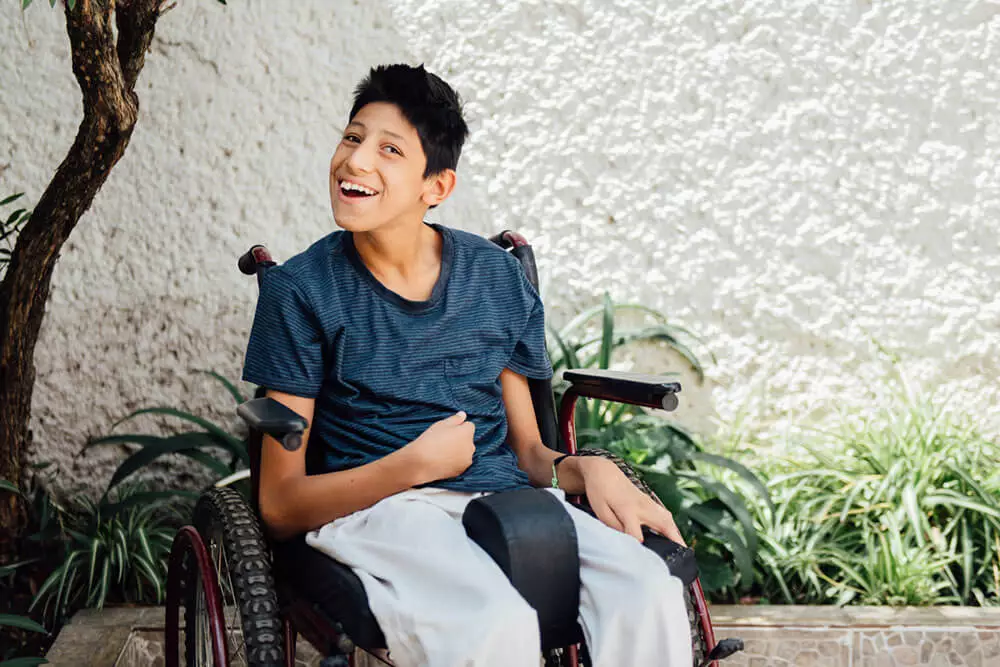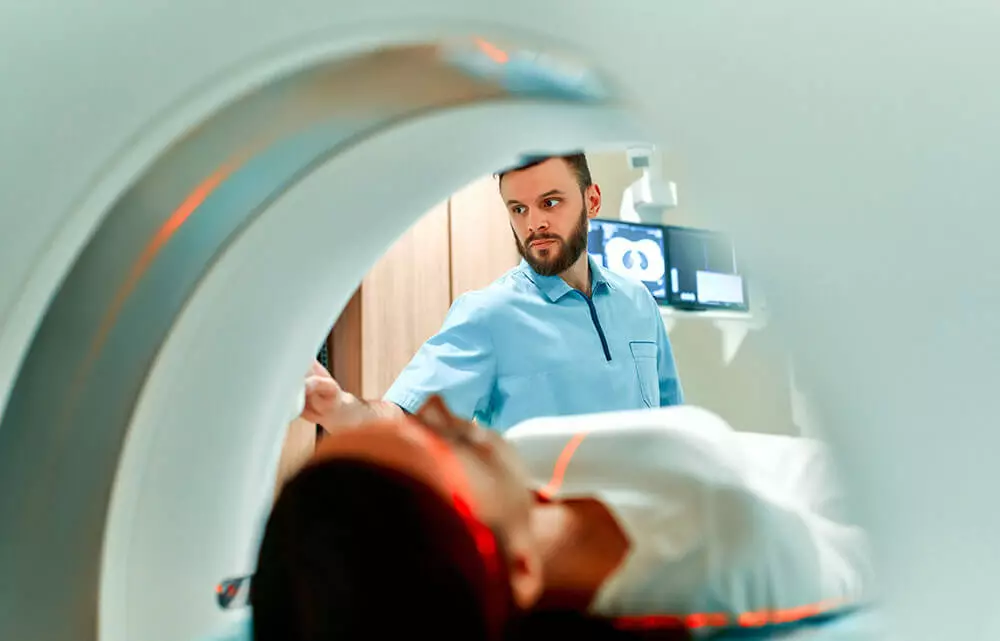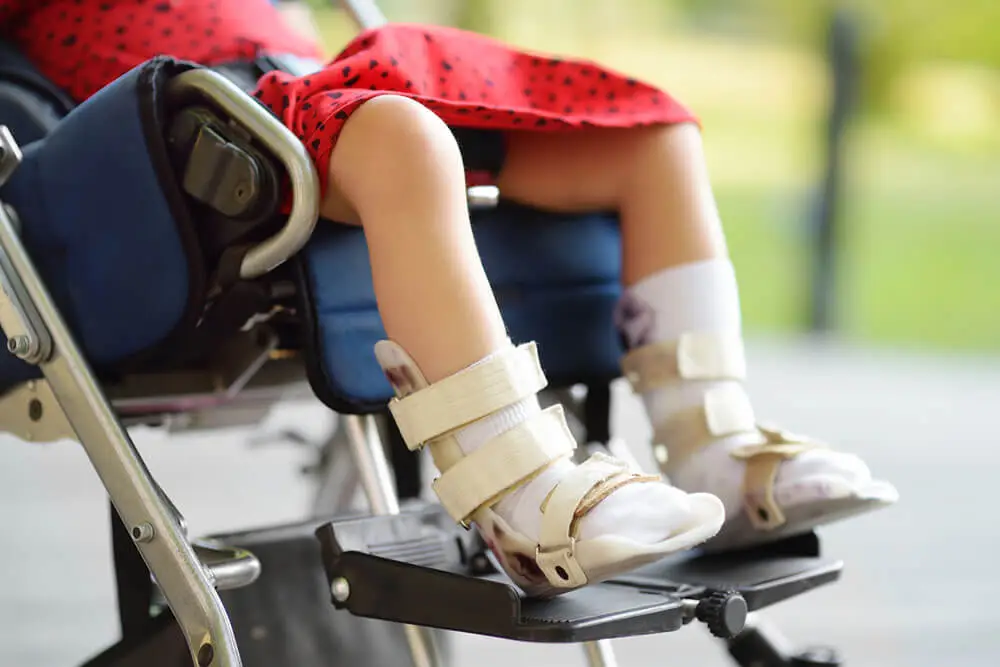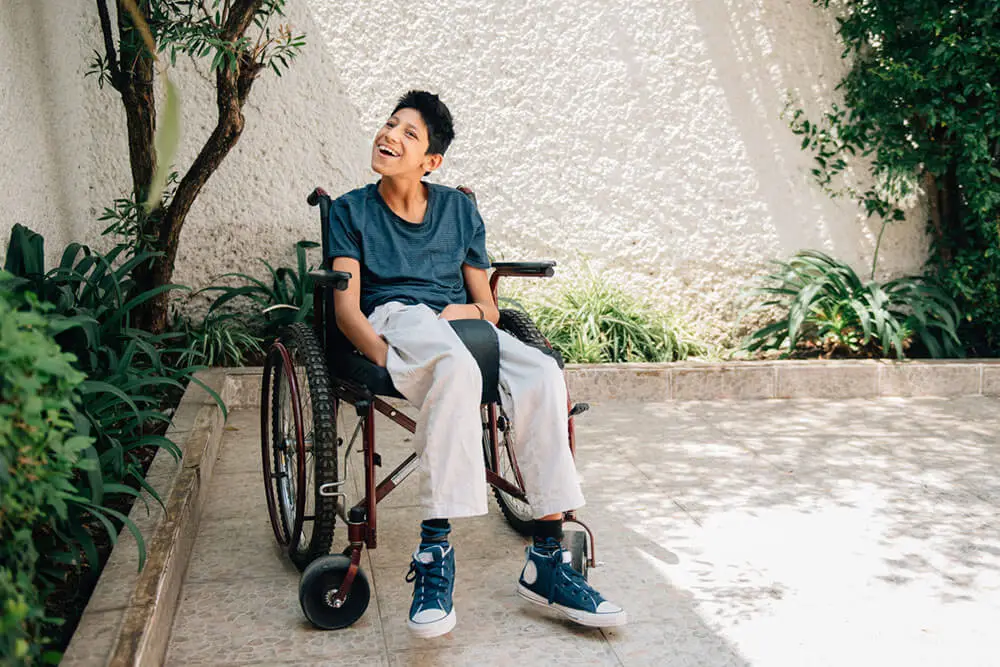What is Cerebral Palsy (CP)?
Cerebral palsy is a group of conditions that appear before birth, during or within the first year of childhood. It is caused by damage to the developing brain during the detail or infant phase. It can affect the following:
- Movement
- Muscle tone
- Coordination
- Vision
- Speech
It’s important to note that cerebral palsy is a condition that many people worldwide live with, and for many, it is a challenging journey. However, although the condition presents unique challenges, many resources, organisations, and support programs can help individuals and their families navigate these challenges.
People with cerebral palsy can live fulfilling and independent lives with the proper support.
Types of Cerebral Palsy
Cerebral palsy types vary depending on the brain damage. The classification of the types depends on the movement challenges and affected body parts an individual is experiencing.
It’s essential to note that cerebral palsy is a complex condition that affects each individual differently. So, symptoms of each type can vary from person to person and even be different among individuals with the same type of cerebral palsy.
Here are some types of Cerebral Palsy:
Spastic Cerebral Palsy
Spastic cerebral palsy is caused by damage to the brain’s motor cortex. Additionally, damage to the pyramidal tracts can also cause this condition. These parts of the brain control voluntary movement and send signals to the muscles. So, when they’re affected, it can be challenging for individuals to perform tasks such as walking and picking up or holding objects.
The most common symptoms of spastic cerebral palsy include the following:
- Stiff muscles on either part of the body
- Challenges with joint extension
- Challenges with mobility
- Crossed knees
- Frequent exaggerated movements
Although some of these symptoms present challenges in everyday life, people with cerebral palsy have enhanced creativity because of how often they have to adapt to their surroundings. This can also lead to developing problem-solving skills and a strong sense of willpower.

Dyskinetic Cerebral Palsy
Dyskinetic cerebral palsy, also referred to as athetoid CP, is caused by damage to a developing brain’s basal ganglia or cerebellum. These brain areas regulate voluntary motor function, eye movements, balance, and coordination.
Children and adults with cerebral palsy of this type will experience loosened muscles (hypotonia) and stiffened muscles (hypertonia), causing muscle tone to fluctuate.
The most common symptoms of dyskinetic cerebral palsy include the following:
- Involuntary movement in the face, limbs, and body
- Rigid or stiff body
- Challenges with feeding and digestion
- Floppiness in the limbs
Because of the circumstances imposed by the condition, people with cerebral palsy develop a high level of adaptability, which can be a great skill.
Ataxic Cerebral Palsy
Ataxic cerebral palsy is caused by damage to the cerebellum. This brain area is linked to motor skills such as coordination, balance, and physical movement.
Common symptoms of ataxic cerebral palsy include:
- Reduction in muscle tone
- Challenges with depth perception
- Challenges with speech
- Challenges with coordination
- Visible shakiness and tremors
- Signs of spreading feet apart while walking
Individuals living with ataxic cerebral palsy develop a strong sense of resilience from an early age which can benefit them in other areas of their lives.
Hypotonic Cerebral Palsy
Hypotonic cerebral palsy is caused by brain damage during birth. This type of cerebral palsy is also caused when the cerebellum is affected.
Individuals with the condition usually have low muscle tone, which results in a lack of stability.
Common symptoms of this type of cerebral palsy include:
- Challenges with head control
- Challenges with stability and balance
- Loose muscles
- Delays in development
- Excessive flexibility in joints and ligaments
Hypotonic cerebral palsy is the least common compared to the other types of this condition.
Mixed Cerebral Palsy
In some cases, there can be multiple brain injuries impacting the brain. This results in mixed cerebral palsy, and it causes a variety of neurological and physical symptoms.
Some common symptoms of this type of cerebral palsy include:
- Challenges with movement, stability, and coordination
- Visible shakiness and tremors
- Convulsive movements (spasticity)
- Poor posture
The most common types of mixed cerebral palsy are athetoid/spastic and ataxic/spastic.


Cerebral Palsy Symptoms
As with many other neurological disorders, all types of cerebral palsy have a few unique symptoms that commonly occur. These symptoms can appear right after or shortly after birth.
To understand the condition better, it’s crucial to look into the symptoms of cerebral palsy.
Movement and Coordination
Symptoms relating to movement and coordination and their severity can vary from one individual to another. This is mainly influenced by the type of brain injury caused to the individual.
These symptoms commonly include:
- Spasticity – characterised by increased muscle tone, which causes muscle stiffness
- Ataxia – characterised by challenges with muscle control, which results in difficulties with balance and coordination
- Athetosis – characterised by slow, involuntary, and writhing movements of the limbs, face, neck, and other muscle groups
- Tremors – causing shaking movements, most commonly in the hands
Physical therapy, occupational therapy, and other treatment plans can help individuals with these symptoms of cerebral palsy.
Speech
Children with cerebral palsy might experience challenges with their speech and overall oral motor skills. This is mainly because of the CP disorders that affect the areas in the brain that control speech.
These symptoms include:
- Challenges with articulation, resulting in speech that isn’t easy to understand
- Signs of slow speech
- Challenges with controlling the tone and pitch of the voice
- Challenges with understanding and using language
- Challenges with using the muscles that control speech
- Signs of stuttering
- Challenges with coordinating breathing and speech
These symptoms can improve over time with the child’s development and with a proper treatment plan.
Eating
Individuals, especially children diagnosed with cerebral palsy, have challenges with eating. These symptoms can be early signs of a CP condition.
Some common eating symptoms include:
- Challenges with chewing and swallowing
- Reflux after eating, which is a result of challenges with digestion
- Gastrointestinal challenges
- Challenges with controlling saliva
Not all individuals with cerebral palsy experience eating-related symptoms.
Motor Development
Children with CP might take longer to develop some motor milestones. These motor development challenges include:
- Challenges with crawling and/or walking
- Challenges with muscle tone (too tight or too loose)
- Challenges with posture
Other Challenges
Cerebral palsy, as a group of disorders, can affect individuals in many different ways.
Aside from the symptoms listed above, there are cognitive and sensory challenges associated with the condition. These symptoms can affect an individual’s learning process, intellectual abilities, and overall quality of life.
Some children with cerebral palsy have challenges with memory and focus, which can affect their performance at school. Additionally, when fine motor skills are affected, using school supplies or participating in group activities might be challenging.
In some cases, an individual’s hearing might also be affected.
Cerebral Palsy Diagnosis
Cerebral palsy can be diagnosed between five months and three years of age. However, parents and doctors can notice early signs after labour and delivery.
Multiple brain scans and tests can be used to determine whether an individual is at risk of having cerebral palsy. The most common ones include the following:
- Cranial ultrasound scan
- MRI scan
- CT scan
It’s crucial to see a specialist if you believe your child is showing developmental challenges, intellectual disabilities, or multiple signs of the condition.
Causes of Cerebral Palsy
Cerebral palsy is caused by damage to different areas in the brain. Various scenarios can lead to an individual attaining the condition.
Some common causes include:
- Infection of the brain (meningitis)
- Infection caught by the mother (chickenpox, rubella)
- Lack of oxygen to the brain
- Head injuries during birth
- Head injuries during their first few years
- Stroke
Cerebral Palsy Caused by Medical Negligence
Medical negligence can be, unfortunately, a cause of cerebral palsy.
This means the infant acquired a brain injury during labour and delivery, resulting in cerebral palsy. Examples of medical negligence are:
- Failure to detect infection
- Failure to detect lack of oxygen
- Forceps improperly used
This presents a heart-wrenching situation for the individual, their family, or caregivers.
Despite the challenges that come with cerebral palsy, every human being is deserving of unconditional support, love, and care.
Associated Conditions with Cerebral Palsy
People with CP might experience associated conditions in addition to cerebral palsy, which can also affect their everyday life.
Some commonly associated conditions include:
- Vision and hearing impairment
- Risk of epilepsy
- Learning difficulties
- Intellectual disability
- Sensory problems
It’s important to note that not all individuals with cerebral palsy will experience associated conditions.


Cerebral Palsy Treatment
The treatment of cerebral palsy depends mainly on the type of the condition and its severity. The three main options are surgery, medication, and therapy.
A proper treatment plan can improve symptoms of the condition; however, there is currently no cure for cerebral palsy.
Physiotherapy
Physiotherapy includes strength and flexibility exercises, special massages and equipment that can help improve motor skills.
This treatment plan can benefit an individual’s coordination, posture, and muscles while helping them to become more independent.
Speech Therapy
Speech therapy includes activities that help with communication, swallowing, and eating. The treatment involves strengthening muscles used for oral communication and understanding speech and language.
Occupational Therapy
Occupational therapy for cerebral palsy focuses on helping individuals become as independent as possible. The treatment involves practising everyday activities that later help develop life skills necessary for independence.
Medicines
Some medications can help those living with cerebral palsy control their symptoms and live more calm and independent lives.
Additionally, there are medications for the associated conditions caused by cerebral palsy. For example, medications are prescribed for children with epilepsy.
Surgery
In some cases, surgery can help improve movement and coordination. However, most doctors recommend physiotherapy and medication before undergoing surgery.
Assistive communication devices
Assistive communication devices for CP include:
- Boards and books for communication
- Devices that help with eye-tracking
- Computers, tablets, and similar smart devices
- Hearing aids
- Writing aids
Assistive devices are crucial for individuals living with cerebral palsy, as they help immensely with talking, writing, and hearing.
Cerebral Palsy Life Expectancy
Cerebral palsy life expectancy is generally calculated by the severity of a child’s symptoms.
This includes:
- Mobility issues
- Intellectual disabilities
- Vision/hearing challenges
- Other coexisting associated conditions
Generally, individuals with mild cerebral palsy live as long as people without the condition. However, only a doctor can predict the outlook of someone’s lifespan.
Individuals can live long, fulfilling lives with a proper treatment plan and support. Additionally, advances in medicine and technology have made it easier for certain symptoms to be improved.
Cerebral Palsy Care with Unique Community Services
At Unique Community Services, we celebrate the differences of individuals and focus on their strengths, raising the quality of their lives.
We create an inclusive space for people diagnosed with cerebral palsy where they can focus on their strengths, leverage them, and live long, fulfilling lives.
We are aware that each person is unique, and every individual requires a tailor-made support plan.
Our goal is to deliver the right and most fitting complex care package for you or your loved one. What’s more, we’re located in Leeds and Manchester—available for 24/7 assistance if needed.




